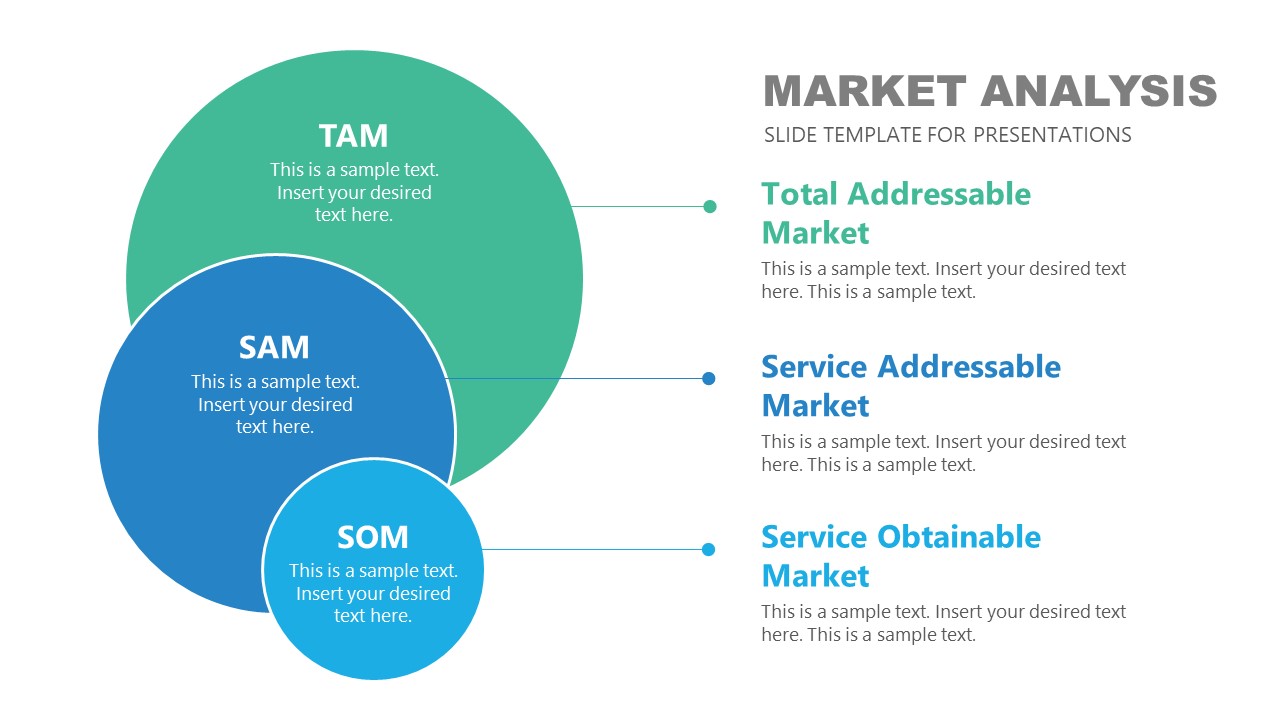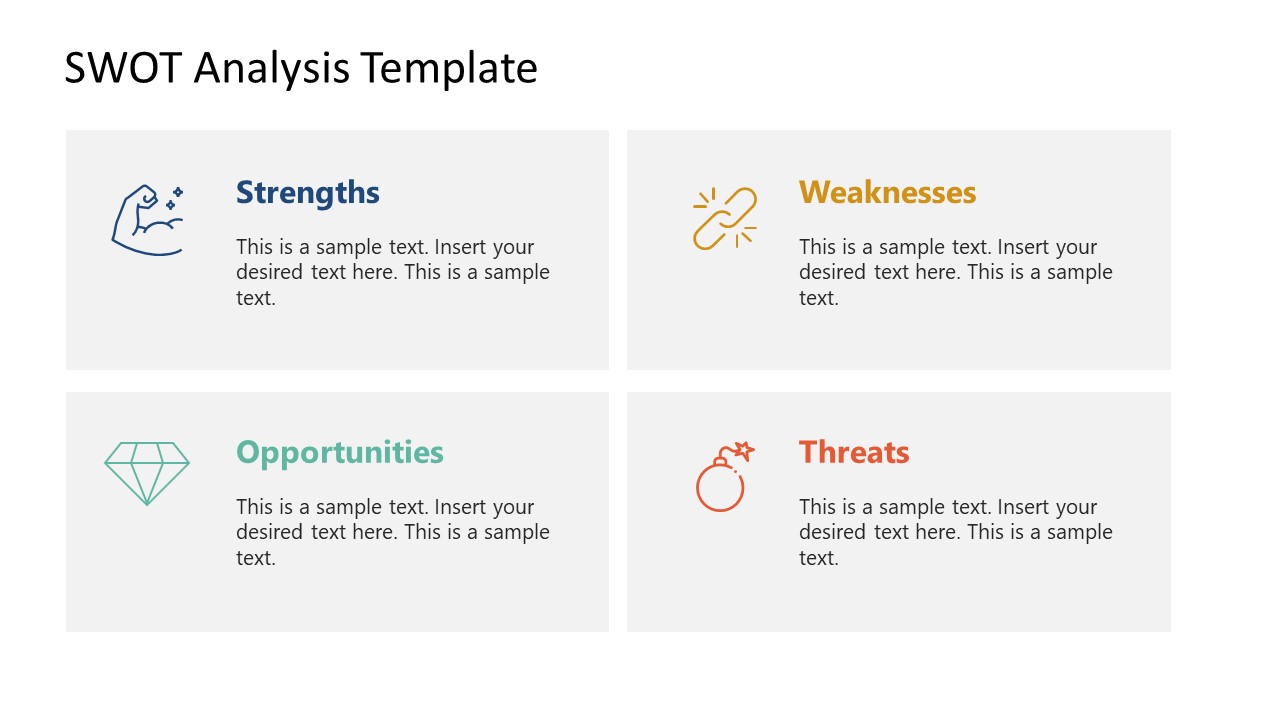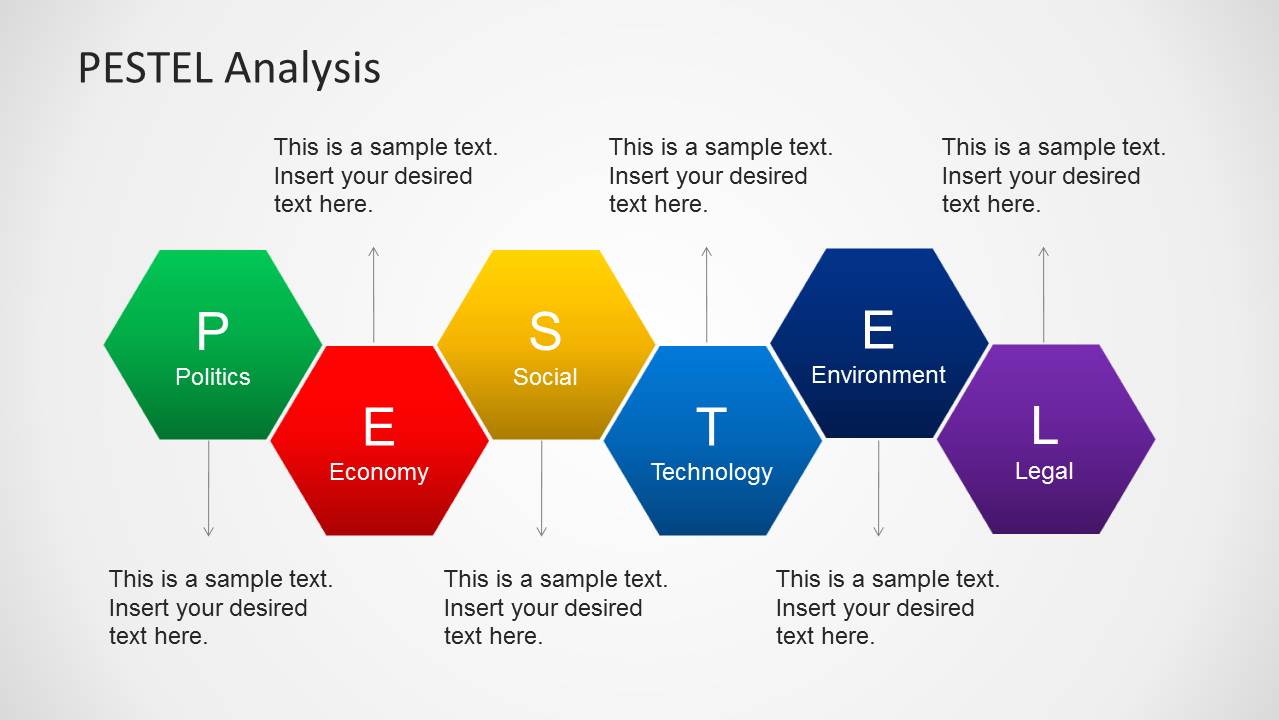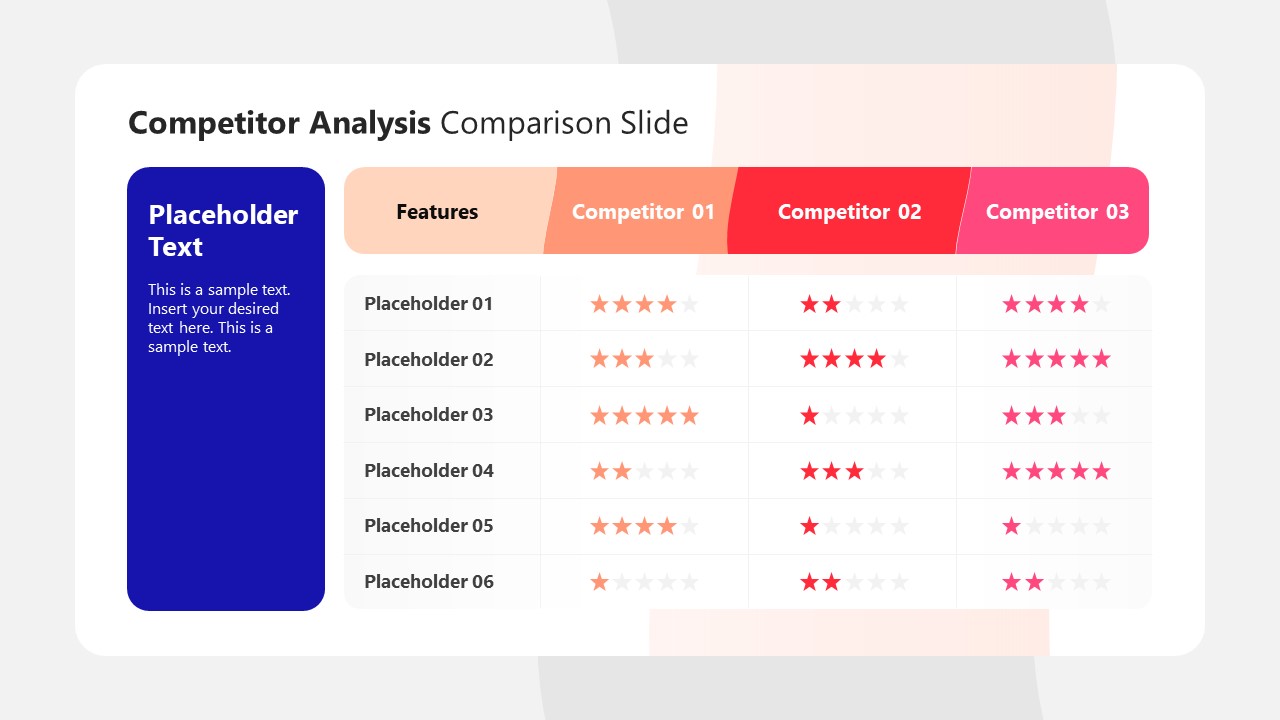
The use of factual figures and data-backed decisions is what sets thriving businesses apart from struggling businesses. When competition is stiff, relying on intuition or gut feelings can be risky. Data allows companies to fine-tune their strategies, targeting specific customer segments, markets, and product features that are most likely to yield results. This is exactly what a carefully carried out market analysis can deliver.
Truth be told, the whole process can be pretty intimidating; that’s why we are here to guide you. In this article, you will find the entire process of conducting a market analysis, how to present it, and a hypothetical case as an example of this process – written in italics.
Table of Contents
- What is Market Analysis
- Benefits of Using Market Analysis as a Tool
- Drawbacks of Market Analysis
- How to Conduct a Market Analysis
- Presentation Templates for Market Analysis
- Conclusion
What Is Market Analysis
Oxford Languages has a simple definition of what market analysis is:
“The activity of gathering information about conditions that affect a marketplace.”
This definition encapsulates the essence of market analysis, but several key points must be elaborated on. To delve deeper into the “conditions that affect a marketplace” mentioned in Oxford Languages’ definition, these encompass a wide-ranging examination of various interconnected elements, including but not limited to your own company.
The market analysis could include looking into the following:
- Market needs
- Market size
- Competition
- Barriers to entry
Altogether, they play a huge role in the sustainability of a business within a specified market. With a clear understanding of these important components, businesses will be able to navigate the complexities of the market environment successfully right from discovery stage.
Benefits of Using Market Analysis as a Tool
Market analysis can be considered the cornerstone of a business plan. It’s the starting point where businesses gather essential information about their target market and industry. Whether you’re starting or expanding your business, the insight you gain from a market analysis will be vital for understanding the market environment and shaping your business’s direction.
1. It helps understand your customer better
Much of your marketing analysis activity will be spent gathering information about your target segment. Who are your target customers? What are the problems they are trying to solve? What are their preferences? Having the answers to these questions will guide you in creating a buyer persona and zeroed-in campaigns.
2. It ensures product-market fit
Corollary to knowing your target customers, you are better positioned to serve them with what they need and want from you. The shocking truth about unsuccessful startups is that 35% fail simply because there’s no market need for what they offer.
Market analysis validates your business ideas by confirming whether there is a genuine demand for the products or services you plan to offer. Knowing your prospects’ preferences and pain points will enable you to design a product or service that satisfies a strong market demand.
3. It anticipates risks
Part of market analysis is studying market trends. For example, you can gauge the overall market conditions, size, saturation, and how consumer behavior shifts. Maintaining awareness of market trends will help you engage in scenario planning and determine strategies to pivot your course when necessary.
4. It aids businesses seeking investment
When seeking funding from investors, you can anticipate receiving questions such as:
- How big is the market opportunity?
- Who exactly is your best customer?
- What are your strengths and advantages over your competitors?
Investors are typically keen on understanding the potential return on investment (ROI) when considering investment opportunities. Your market analysis will address these concerns and instill confidence by providing evidence-based insights into the market you are tapping into. Ultimately, this information may convince investors to allocate capital to your business.
5. It provides a sound basis for market strategies
The role of market analysis in providing a solid foundation for market strategies cannot be overstated. From your analysis, you can make sound decisions about your pricing, the distribution channel to use, marketing strategies, or whether to enter a new market. It empowers businesses to make informed choices that optimize their competitive positioning and growth potential.
Drawbacks of Market Analysis
Market analysis is like a double-edged sword. While it offers numerous benefits, it also has some potential disadvantages – mostly about the required resources.
Conducting a thorough market analysis can be time-consuming and expensive. Gathering data, conducting surveys, and hiring market research professionals can incur significant costs, especially for small businesses with limited resources.
One may also argue that the over-emphasis of marketing analysis on data may impede creativity and innovation. There may be some truth in this argument. However, important business decisions can not be based on knowing when something is right or wrong.
A PwC survey revealed that highly data-driven companies are 3x more likely to report significant improvement in making big decisions. Data from stringent market research will guide you in making confident and effective decisions.
How to Conduct a Market Analysis
1. Conduct Market Segmentation
The saying “hit two birds with one stone” doesn’t always apply to business, especially marketing. Effective marketing often relies on the opposite principle: targeting a specific buyer persona with a highly focused campaign. Hence, the first agenda in market analysis is market segmentation.
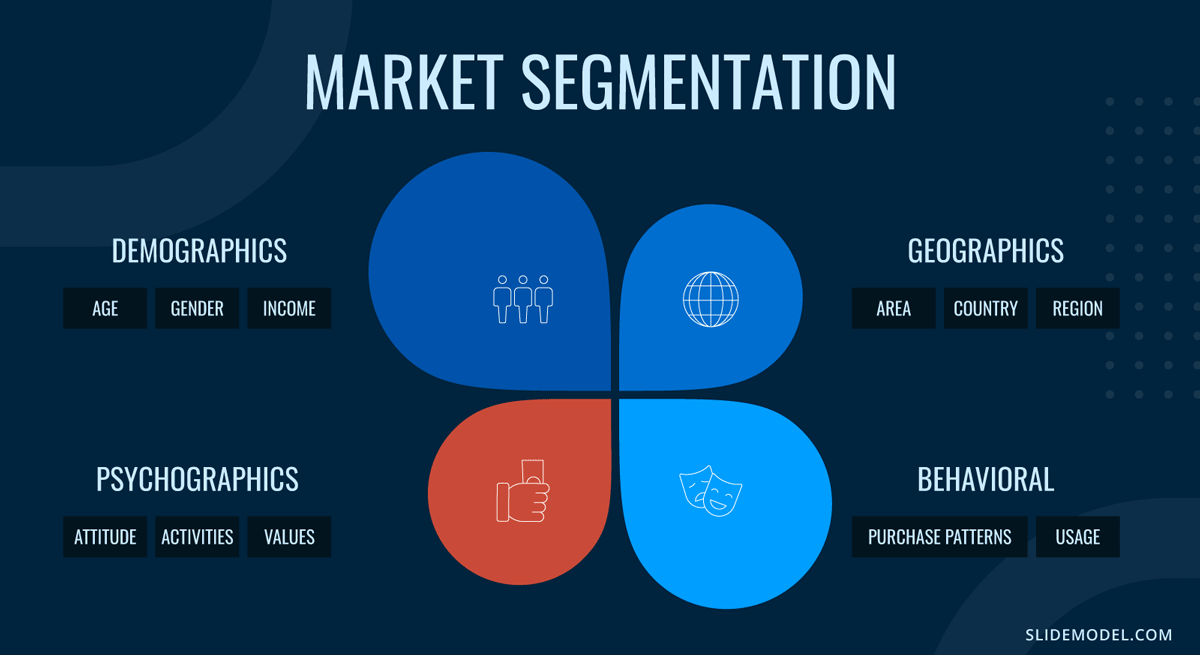
In this stage of the market analysis presentation, you will divide your target market into groups with similar characteristics so that you can connect with each segment on a deep and meaningful level. Segmentation can be done according to the customers’ Geographic, Demographic, Psychographic, and Behavioral criteria.
TAM (Total Addressable Market), SAM (Serviceable Addressable Market), and SOM (Serviceable Obtainable Market) are also valuable concepts in market segmentation and sizing. These progressive levels of market segmentation can guide you in identifying the most promising market opportunities. Starting with a broad view of the entire market (TAM), you can refine your segmentation to focus on segments you can capture and serve effectively (SOM).
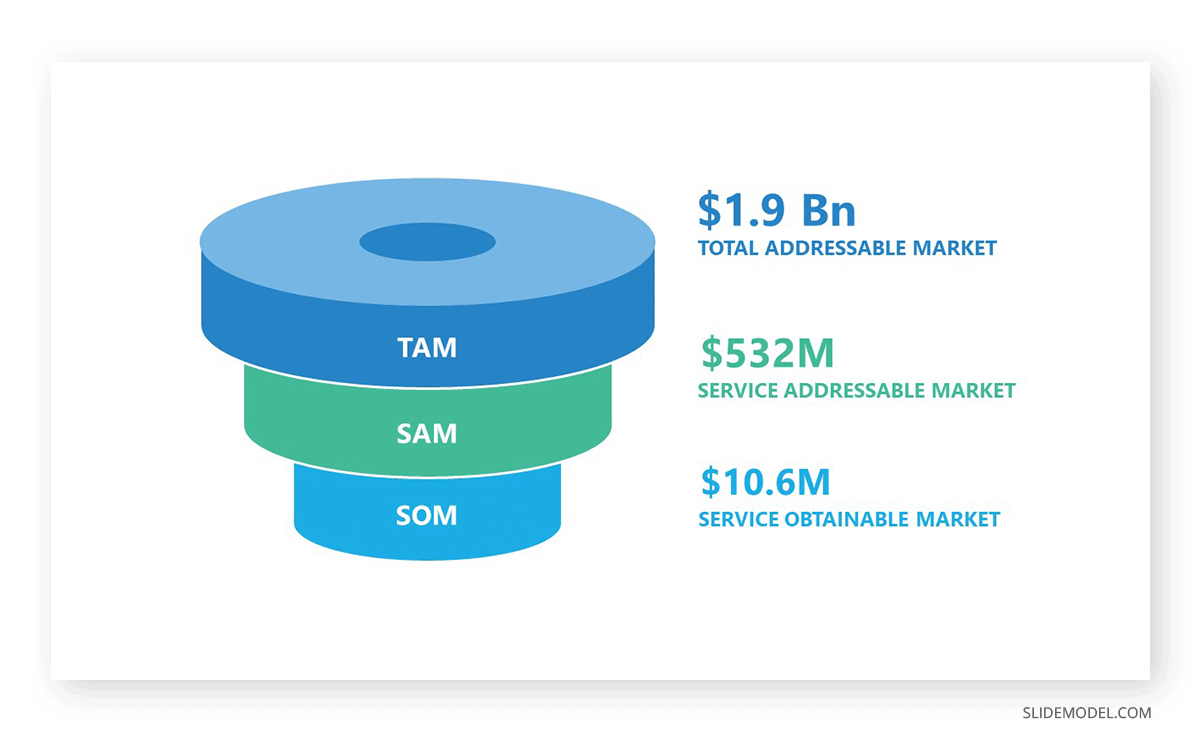
Let’s consider an example of market segmentation for a healthy meal kit subscription service in California. The TAM for the business would include everyone who could benefit from prepared meal subscriptions – e.g., the entire population interested in such service in California. However, the organization’s capabilities, such as its distribution channels, make it impossible to target such an enormous market, so it refined its segment to densely populated urban areas (SAM).
Within the SAM, the healthy meal kit subscription service can further refine its segmentation to prioritize specific customer segments based on demographics, lifestyles, and preferences. So, its SOM are busy professionals and fitness enthusiasts in densely populated urban areas of California.
2. Analyze the Competitive Landscape
Competitive analysis is also crucial to market analysis and any business strategy. In this stage, you identify the organizations that may take customers away from your business. You can use this information to benchmark your performance against competitors and set realistic goals for improving weak areas.
You can use several competitive analysis tools to gauge where your business stands in the market. For example, you may use a perceptual map to visualize how customers distinguish your business regarding specific attributes relative to your competitors. You might discover that customers deem your rivals more affordable and high quality than you offer. Using this knowledge, you can develop strategies to make the necessary improvements.
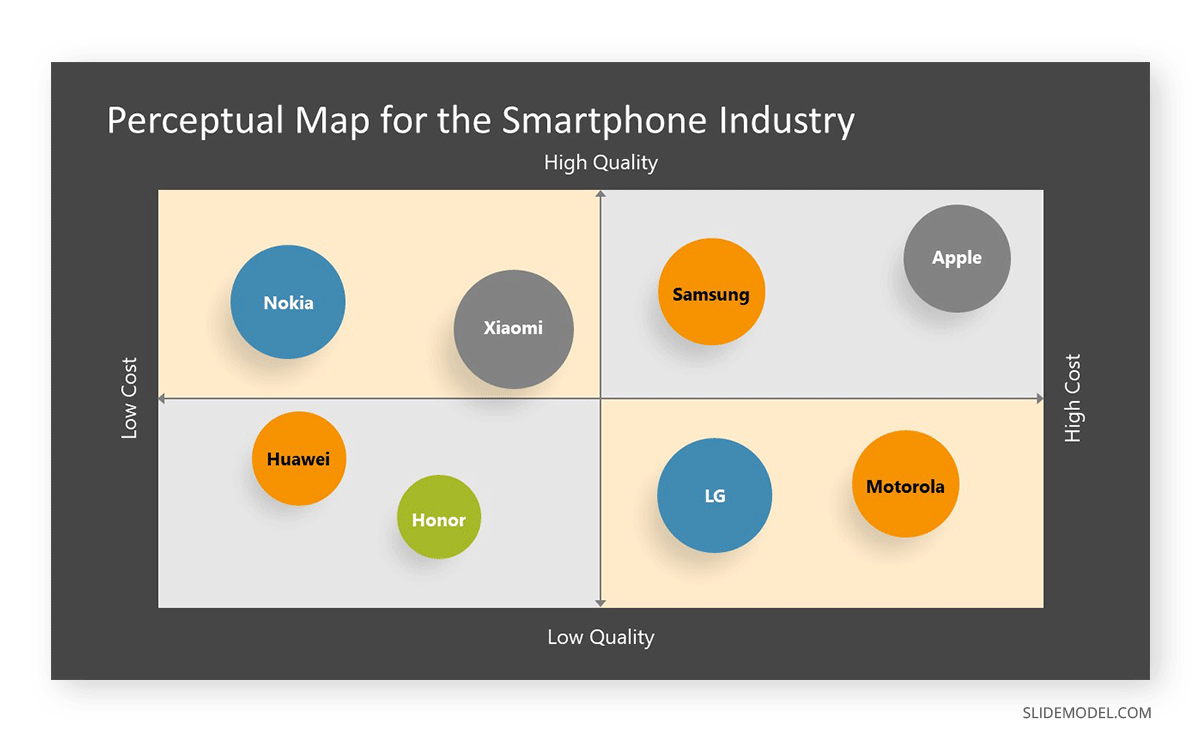
The beauty of conducting a competitive analysis is it may also unlock untapped opportunities for your business. By analyzing your competitors, you can identify areas where they may underserve customers. These gaps in the market represent opportunities for your business to step in and provide a solution.
Let’s go back to our healthy meal kit subscription service example. Suppose you conducted a thorough competitive analysis for your service and discovered that customers’ vegan options are limited. This underserved niche segment can be your starting point for developing a go-to-market (GTM) strategy.
3. Identify Barriers to Entry
So, you identified a new potential market to tap into. The next step is to identify the obstacles that can prevent you from penetrating that new market, a.k.a the barriers to entry. It fits into the broader context of market analysis because it helps businesses assess the feasibility of entering a specific market before any significant investment.
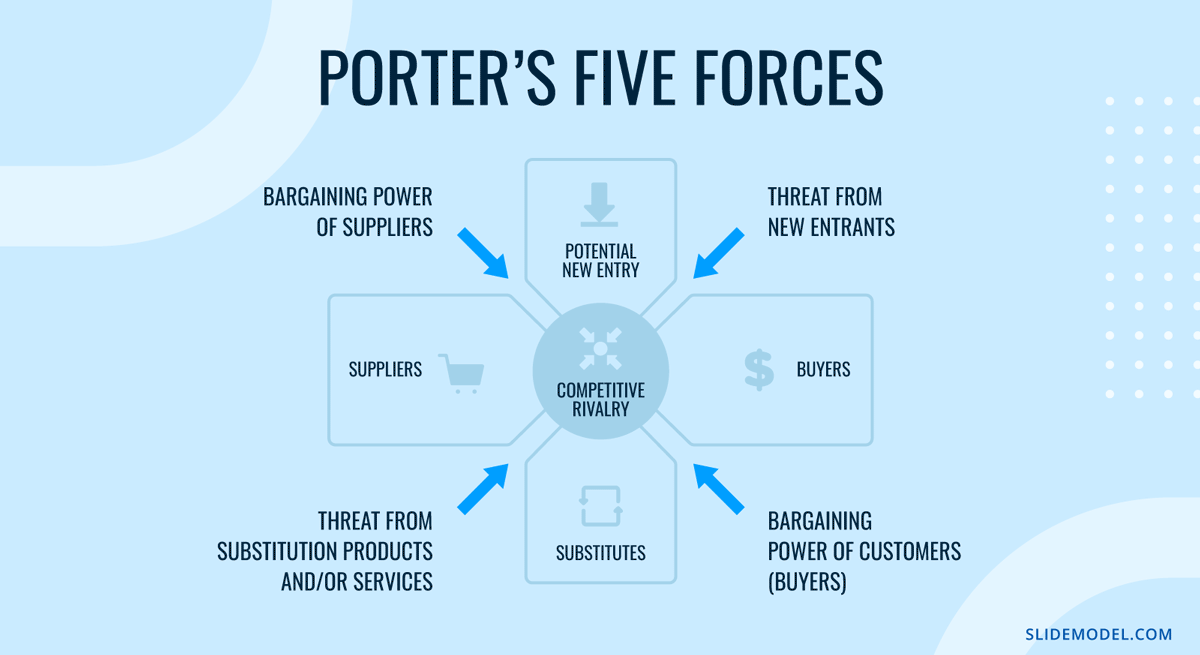
The Five Forces Model, created by Harvard Business School professor Michael Porter, discusses factors that can prevent newcomers into an industry sector. They are:
- Competitive Rivalry (e.g., price competition, advertising battles, innovation races)
- Bargaining Power of Suppliers (e.g., limited suppliers, unique technologies )
- Bargaining Power of Buyers (e.g., low buyer volume, price sensitivity)
- The threat of Substitution (e.g., switching costs, technological advancement)
- The threat of New Entry (e.g., government/ regulatory policies, start-up costs)
While often seen as obstacles for new entrants, barriers to entry can also serve as valuable assets for established businesses. Companies can strategically use them as a defensive mechanism against new entrants and enhance their competitive position.
Let’s say your healthy meal kit subscription service was able to target the underserved niche segment of vegan options. Some of the strategies you can implement to build barriers to new entrants are:
- Economies of scale: You purchase ingredients in larger quantities, reduce per-unit production costs, and negotiate favorable deals with suppliers.
- Competitive Pricing: You price your vegan dishes competitively, making them affordable compared to other vegan restaurants or vegan-friendly options.
- Exclusive Partnerships with Suppliers: You secure a consistent supply of high-quality ingredients from suppliers.
- Customer Loyalty: You offer discounts and rewards tailored to the preferences of vegan subscribers.
4. Prepare a Financial Forecast
With an understanding of your target segment, your competitors, the gap you intend to address, and the deterrents to establishing your business, you must now contemplate whether the effort is justified. This is what your financial forecast intends to answer.
A financial forecast (a sales or revenue forecast) is an educated guess of a business’s anticipated income based on past figures. These forecasts serve as a forward-looking tool to guide your business decisions, allocation of resources, and strategic planning.
But how do you prepare a financial forecast for a startup without relying on guesswork?
John Rampton, an entrepreneur, shares a helpful tip in a Forbes article – start with your current financial position. Begin by taking notes of your expenses – variable and fixed costs – and your intended per-unit price. These components will help you calculate your break-even point or the sales you need to make for the cost to equal income.
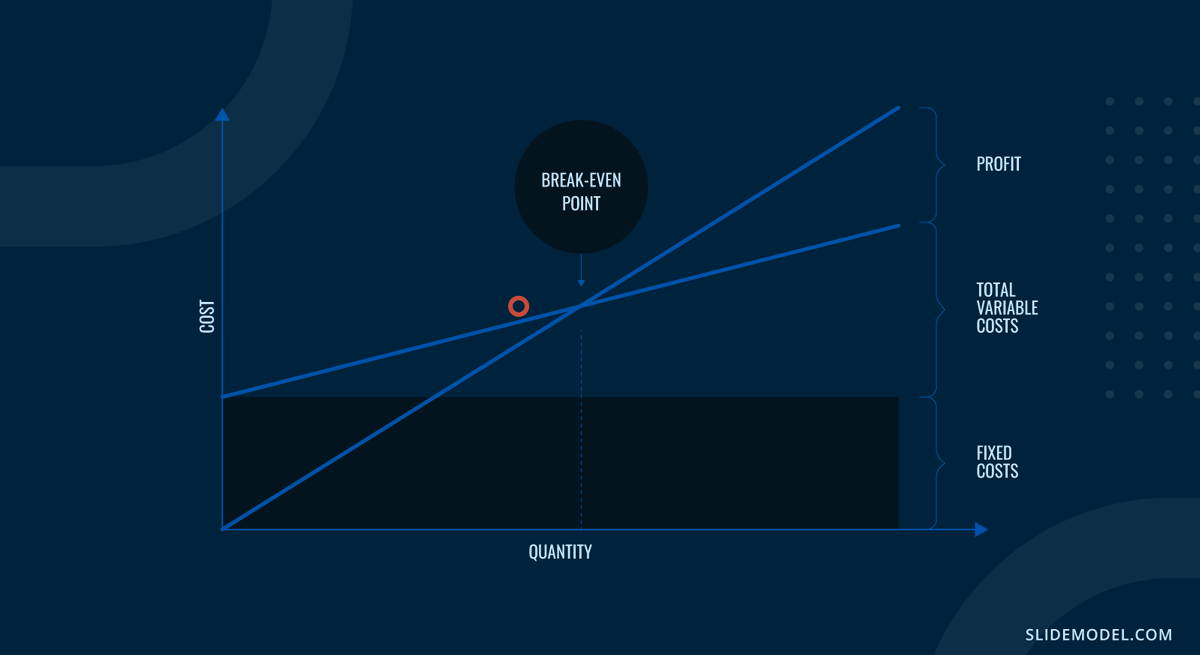
Going back to our example, let’s say that the healthy meal kit subscription service business has an $8,800 total fixed cost, a $10 variable cost per unit, and a $20 price per meal. This will bring their break-even point to 880 monthly meals, as shown in the equation below.
Break-even sales per month = Fixed Costs / (Price per Meal – Variable Cost per Meal)
= $8,800 / ($20 – $10)
= $8,800 / $10
Break-even sales per month = 880
This piece of information is critical to determine whether the sales levels required to support your business can be met by the demand of your target segment. It can also inform your strategic pricing, marketing, and sales decisions.
Presentation Templates for Market Analysis
Market analysis often culminates in a presentation because presenting the findings and insights to stakeholders is a critical step in the process. In doing so, you need to distill complex data and analysis into a format that is easier for others to understand. Check our collection of market analysis presentation templates, can make this process easier and more visually appealing.
Conclusion
Market Analysis can appear daunting, but it’s a crucial investment in the future of any business. The knowledge and insights gained through this process confirm a business idea and help companies confidently navigate the complexities of today’s markets. It sets your expectation of market conditions that lie ahead of you before taking that first step.
